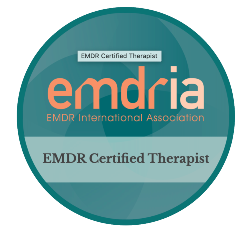Tips for Managing PTSD
PTSD, the acronym for Post Traumatic Stress Disorder, can be an invasive and crippling disorder that is the unfortunate aftermath of trauma. The depression, re-intrusive thoughts, panic and anxiety can take a huge toll on quality of life. Although most people seek therapy for this disorder, they struggle with managing PTSD in between sessions. Here are a few of the tools that can best help to manage the symptoms while doing the deeper work with a therapist:
- Deep breathing
Deep breathing exercises really do work. What happens with deep breathing is that it engages the part of the nervous system that acts to calm us down. The sympathetic nervous system is the part of the nervous system that is responsible for engaging safety seeking behavior. But, the other branch of the nervous system, the parasympathetic nervous system is what kicks in to calm us down and create an internal state equilibrium and balance (not too relaxed and not anxious or overactive.) Taking several deep breaths in through the nose and out through the mouth can do wonders for managing PTSDS, lessening the feelings of anxiety, panic or worry as it engages this parasympathetic branch of the nervous system.
- Mindfulness
Mindfulness exercises involve bringing your attention to the present moment. Notice all of your senses. What do you see, hear, taste, smell and feel right now? Focus on those things and when your mind drifts to worries or future thoughts, gently bring your attention back to the present moment. The reality is that all we really have is the present. You may be surprised to see how much more relaxed you feel simply by practicing this shift in focus periodically throughout the day. Brain scans (SPECT imaging) have actually shown physical shifts in the brain that take place when mindfulness is practiced regularly.
- Exercise
Getting regular daily exercise also can have a dramatic impact on anxiety and stress, ultimately making the process of managing PTSD more attainable. Take a brisk walk or do some stretching exercises, take a yoga class or go for a run. Exercise releases good hormones such as endorphins into the system that help us to feel good and further bring balance to the two branches of the nervous system. In addition to this, exercise just makes us feel mentally good about ourselves overall.
- Engage in a hobby
 Having a hobby that you really enjoy helps divert your attention from your anxiety and also acts to bring the two branches of the nervous system into balance. When actively involved in a hobby, we get into what is known as the “flow.” This is when time seems to slip away as our attention is focused on something we enjoy. So if you don’t have a hobby, try taking an art class or learning a new craft. You will notice how the experience of engaging in an activity you enjoy will reduce your anxious feelings.
Having a hobby that you really enjoy helps divert your attention from your anxiety and also acts to bring the two branches of the nervous system into balance. When actively involved in a hobby, we get into what is known as the “flow.” This is when time seems to slip away as our attention is focused on something we enjoy. So if you don’t have a hobby, try taking an art class or learning a new craft. You will notice how the experience of engaging in an activity you enjoy will reduce your anxious feelings.
Getting professional help is key in the process of true resolution of the symptoms of PTSD, but managing PTSD and its symptoms in between sessions is important. By engaging in healthy ways to handle the symptoms, the process of treating the disorder in therapy will progress much more rapidly. The good news is that PTSD can be resolved bringing people back to the full enjoyment of life, free of the anxious feelings that accompany the disorder.
Click here for more information on PTSD Treatment.
For more information about organizations that have resources and research about PTSD:
EMDR International Association
Anxiety Disorders Association of America





